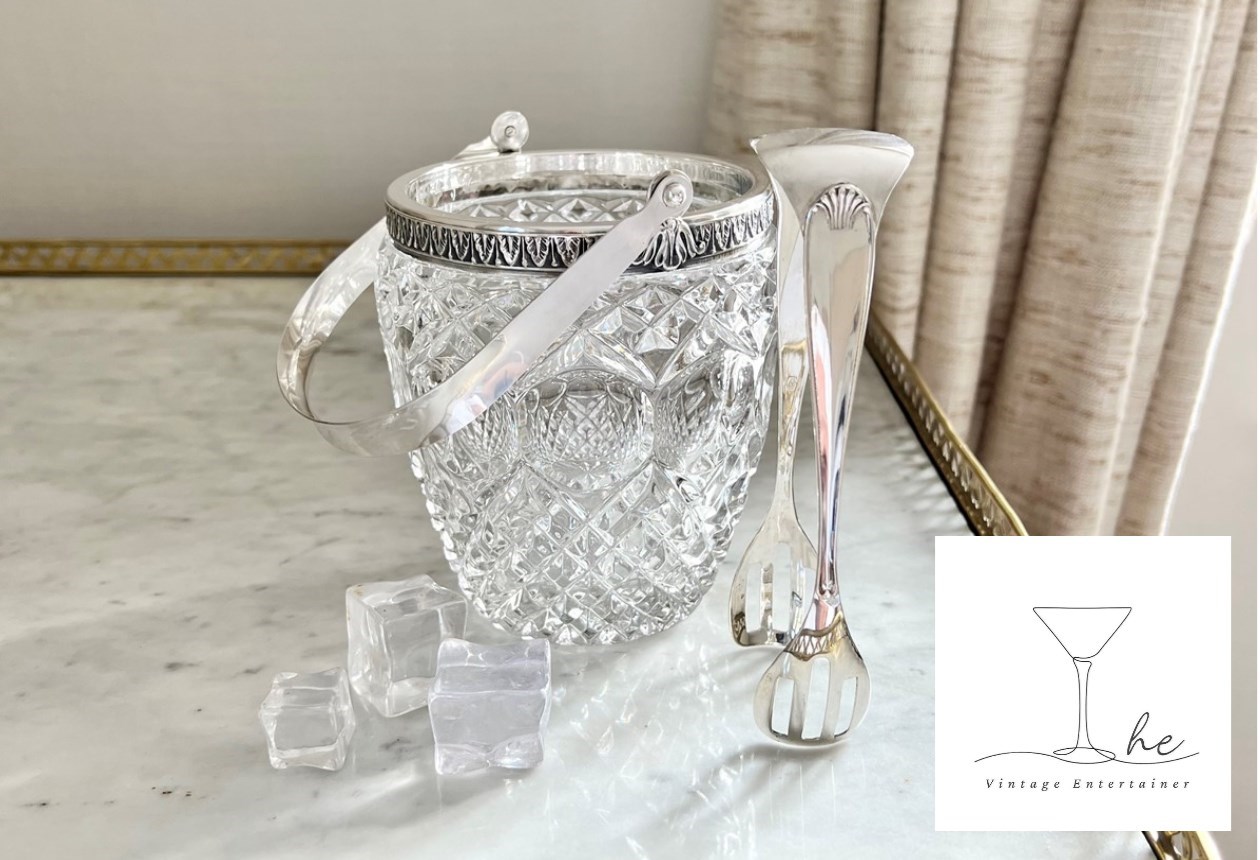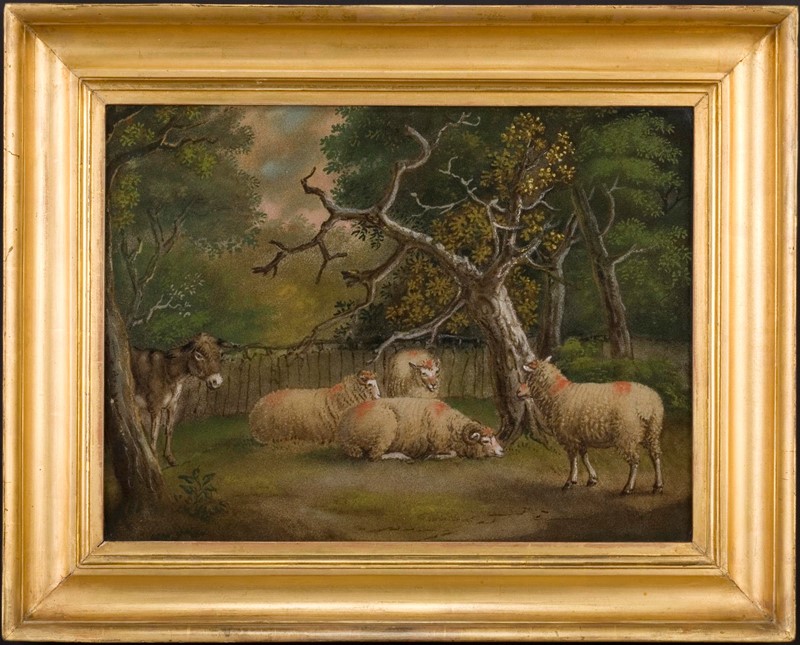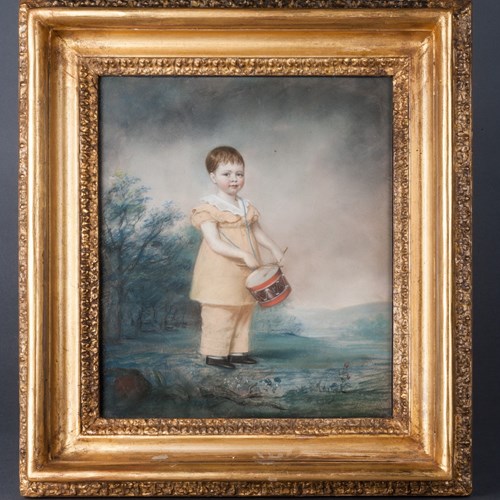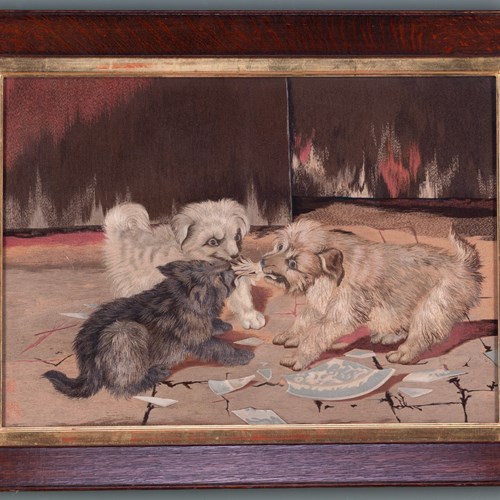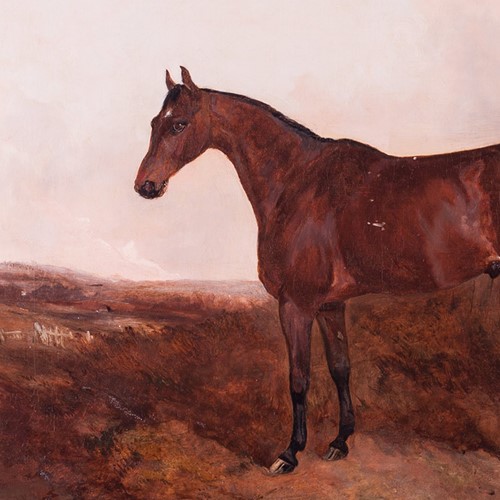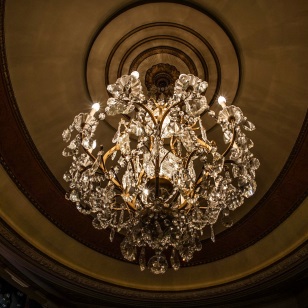Tupped Sheep & A Donkey By Zobel
Stock No
411
2015
- £3,250.00
- €3,707 Euro
- $4,349 US Dollar
Questions about this item?
Like this item?
Item Description
Early 19th century sand picture attributed to Benjamin Zobel depicting four tupped sheep and a donkey in an Autumn wooded landscape.
Excellent condition retaining good colour throughout. Within a period giltwood molding frame. Signed "B. Zobel" to the reverse.
English circa 1815.
w.28.75 x h.23 in (21.75 x 16)
Benjamin Zobel began his career in Memmingen in Bavaria (Swabia) in the family confectionery business. This apprenticeship became crucial to his career as a sand-painter. When he turned eighteen he moved to Amsterdam where he stayed for three years studying miniature painting before moving to London, where he was employed by Ecchard Brothers of Chelsea for whom he designed patterned wallpapers, linens and silks.
Three years later Benjamin Zobel was employed by the Prince Regent's chef Louis Weltje, and became a `Table Decker' at Windsor Castle. The custom of `Table Decking' had been introduced into England by George III, where the table cloth at dinner was elaborately decorated with designs of coloured sands, marble dust, powdered glass or bread crumbs. Zobel became a skilled confectioner and was entrusted with the pictures made in coloured sugars that decorated the huge tarts served at banquets.
The method he employed for making sugar patterns was identical to that which he used to make his sand pictures; that is the sugar, or sand, is shaken through a cut and pleated playing-card. Having converted the ephemeral process of sugar pattern to a permanent form of picture making, and believing that there was a future in it, he continued to make his sand pictures in his spare time. The ancient Japanese skill of bon-kei or `tray picture' was known, but Zobel has the reputation of being the inventor of the sand painting technique, and he was certainly the first to introduce the art to England.
Item Info
Seller Location
London, London
Item Location
United Kingdom
Seller Contact No
+44 (0)207 7275263
+44 (0)7831 561042
More from WALPOLES
